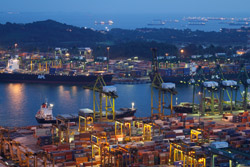

File photo: ADB
Dhaka, Bangladesh (BBN) - With 36 per cent of the country’s urban population living in Greater Dhaka, the capital of Bangladesh has become one of the world’s most densely populated cities.
To achieve its vision of becoming an upper-middle income country by its 50th birthday, Bangladesh must manage Dhaka’s urban growth.
This includes taking full advantage of East Dhaka – where there is ample availability of land near the core of the city – to increase the city’s economic opportunities and livability, says a new World Bank analysis shared on Wednesday at a high-level international conference.
Dhaka’s urban development has not kept up with the city’s rapid growth, resulting in a messy and uneven urbanization process. Lack of adequate planning has led to congestion, poor livability, and vulnerability to floods and earthquakes.
Many residents, including the 3.5 million slum dwellers, often lack access to basic services, infrastructure, and amenities. In the last 10 years, average traffic speed has dropped from 21 km/hour to 7 km/hour, only slightly above the average walking speed. Congestion in Dhaka eats up 3.2 million working hours per day.
“Based on current trends, Dhaka will have more than 35 million people by 2035. A productive and livable city of this scale can make enormous contributions to its citizens and the economy,” said Qimiao Fan, World Bank Country Director for Bangladesh, Bhutan and Nepal.
“However, Dhaka must seize the opportunity to properly plan, coordinate, and invest for the future to achieve its full potential. As Bangladesh’s long-term development partner, the World Bank looks forward to supporting the city’s ambitious transformation.”
Between 1995 and 2005, road surface in Dhaka increased by only 5.0 per cent, while population increased by 50 percent and traffic by 134 percent.
Dhaka’s urbanization originated along the northern corridor of the central region, and then expanded westward. Its Eastern half is mostly rural but has the potential to develop rapidly.
Accounting for 40 per cent of the city’s surface, it has the advantage of being within 5 kms of prosperous areas like Gulshan, which can help support its growth through capital and human resource investments.
With proper planning and implementation, East Dhaka can become a vibrant pole of activities with higher value added, while helping ease density and congestion in the rest of the city.
However, if not managed properly, the rapid and unplanned urbanization of East Dhaka will make congestion and livability worse and expose more people to risks from floods and earthquakes.
“Examples from around the world such as Eastern Shanghai’s Pudong District and others demonstrate that proper planning and execution can encourage economic vibrancy, improve livability, and ease congestion,” said Martin Rama, World Bank Chief Economist for the South Asia Region.
Sheila Dikshit, former Chief Minister of Delhi, India, and Qizheng Zhao, former Vice Mayor of Shanghai, China shared their experiences on transformations in Delhi and in Eastern Shanghai’s Pudong district, respectively, according to a World Bank statement.
Both cities gained greatly from public-private partnerships as well as coordination efforts from multiple ministries and agencies.
Professor Anthony Venables of Oxford University presented four simulation scenarios for Dhaka’s development towards 2035.
Minister of Local Government, Rural Development and Cooperatives Khandker Mosharraf Hossain delivered the keynote speech.
Policy makers, senior government officials, Mayors for Dhaka North and South, urban planners, civil society representatives, and private sector leaders also joined the conference. Participants discussed preliminary findings of the draft report ‘Towards Great Dhaka: A New Urban Development Paradigm Eastward.’
The World Bank was among the first development partners to support Bangladesh following its independence.
Since then the World Bank has committed nearly $26 billion in grants and interest-free credits to Bangladesh. In recent years, Bangladesh has been the largest recipient of the World Bank’s interest-free credits.
BBN/SSR/AD